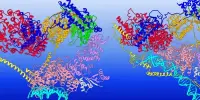The microbiome is the invisible world of your dog’s hundred trillion bacterial, viral, and fungal microbes that live on and in their fur and skin, behind their ears, and inside their eyelids. The majority of these minuscule microbes are good guys, gut microbiota that congregate in the digestive tract and boost your dog’s immune system, produce vitamins, and digest food to generate nutrients and energy.
In a new study, researchers sampled the fecal microbiomes of dogs from various geographical populations to better understand how they differ around the world. Domesticated wolves are dogs. Dogs’ gut bacterial flora may be affected by changes in their living environment, such as diet and veterinary care.
The gut microbiome contributes to host metabolism, defends against pathogens, educates the immune system, and affects most physiologic functions of its host directly or indirectly through these basic functions. Molecular techniques have allowed us to broaden our knowledge by revealing previously unknown unculturable bacteria.
Although the microbiome (the collection of all microbes that live in the body) in dog feces has been extensively studied, the majority of those studies have been limited to domesticated dogs. Researchers sampled fecal microbiomes from diverse geographical populations in a new study to better understand how they differ around the world.
The majority of our previous studies have looked at animals that come into a vet clinic or are housed in a research facility; they are vaccinated and eat processed food. However, this is not the case for animals like those found in Laos, which live outside and are subjected to a variety of environmental stresses.
Kelly Swanson
“A lot of the studies look at how different diets affect dog microbiomes. Although they are extensive, they work with dogs in veterinary centers, which lead a very different life from dogs that don’t live as pets,” said Karthik Yarlagadda, a former graduate student in the Malhi group. “It’s similar to how studies on the microbiomes of humans have been focused on people who live in cities and eat processed foods.”
The researchers collected fecal matter from three geographical locations to sample a diverse range of microbiomes: pets from South Africa, stray dogs and shelter dogs from India, and dogs from a rural village in Laos. The samples were collected on FTA cards, which contain chemicals that preserve DNA so that it can later be sequenced and analyzed.
“The majority of our previous studies have looked at animals that come into a vet clinic or are housed in a research facility; they are vaccinated and eat processed food,” said Kelly Swanson, an animal and nutritional sciences professor. “However, this is not the case for animals like those found in Laos, which live outside and are subjected to a variety of environmental stresses. By carrying out these studies, we can learn what is considered “normal” for different populations around the world.”

The dogs were fed different diets in each location. The shelter dogs were fed rice, lentils, yogurt, and dog food; the stray dogs probably ate human leftovers; the village dogs probably ate local agricultural products like maize, corn, bamboo, sticky rice, and fish from nearby rivers; and the pet dogs probably ate commercial dog food.
Surprisingly, while the microbiomes of the different populations differed, they were functionally identical. “It was fascinating to see how different microbiomes can coexist while performing the same metabolic function. Dogs consuming dairy in South African and Indian populations, for example, had different Lactobacillus species that were likely involved in the same pathway “Yarlagadda explained.
In addition to comparing the microbiomes of dogs from different geographical locations, the researchers wanted to compare these samples to ancient microbiomes obtained from fossilized dog feces. Dogs that live outside and eat a varied diet are likely to have microbiomes similar to those of ancient dogs, providing insight into how industrialization affects fecal microbes.
The researchers discovered that the microbiomes of ancient dogs closely resembled those of non-US populations, possibly due to overlapping diets and increased environmental exposure. Further research will be conducted to determine whether human microbiome diversity will follow similar trends in non-industrialized settings.
“We want to find more data on ancient microbiomes in various dog species using sequencing techniques from a previous study,” said Ripan Malhi (GNDP/GSP/IGOH), an anthropology professor. “Now that we know what they ate, we can make more comparisons to see how diet influences the microbiome.”
















